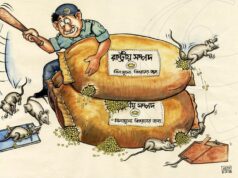Market freedom fosters a freer press, keeps open means of expression, and thus strengthens democracy.
Last week [of January], as farmers were gearing up for protests on Republic Day, the Uttar Pradesh administration used an old trick from the Indian book of controls. It ordered supply officers in all districts to stop selling diesel to farmers. A plan to parade tractors in protest on Republic Day not only requires the right to freedom of expression, but also the means to exercise that right—in this case, diesel. If you think the government controlling diesel sales and prices is good for the poor, especially farmers, and not a means of controlling the democratic process, think again. For urban elites, such control usually takes the form of cutting off the internet, shutting down phone networks and electricity, even specific social media apps.
Explicit censorship laws are rightly criticized as an assault on democracy. But, India’s long legacy of socialist policies—price controls, quantity controls, and ownership controls on the means of production—also directly affects the resources Indians need to express themselves. The Yogi Adityanath government of UP is not the first to exploit this legacy and likely won’t be the last.
One famous example is the Indira Gandhi government’s attempt on 25 June 1975 to suppress news of the arrest of opposition leaders at the proclamation of Emergency. A chain of orders directed the general manager of Delhi Electric Supply Undertaking to cut off supply to newspaper offices in New Delhi. Newspaper editions from other cities carried the news, while some of the Delhi editions of 26 June struggled. The same story manifests itself in different ways —sometimes through diesel and electricity, and at other times, through social media and the internet.
It is not just ‘authoritarian’ leaders who have used means of production to control free speech. In the 1950s, the Nehru government passed the Newspaper (Price and Page) Act, 1956, and the Daily Newspapers (Price and Page) Order, 1960. These laws regulated the prices publishers could charge for newspapers, based on page count and the amount of content. Sakal Papers challenged their constitutionality. In Sakal Papers (P) Ltd. vs. The Union of India (1962), the Supreme Court held the laws unconstitutional as they would either increase prices or reduce the number of pages, both of which would inhibit the dissemination of ideas, and therefore violate Article 19(1)(a) of the Indian Constitution.
Unfortunately, the Supreme Court was not always consistent in fighting economic controls that infringed speech. Another socialist policy in the 1950s was to regulate the wages of journalists through the Working Journalists (Conditions of Service) and Miscellaneous Provisions Act, 1955. This was challenged by Indian Express, arguing that Wage Board rates would make it prohibitively expensive to run the newspaper. In Express Newspapers vs. Union of India (1958), the Supreme Court held this law valid, though it did set aside the punitive order of the Wage Board.
Even before the Emergency, Indira Gandhi’s government tried to use old orders in a new form to control press freedom. In addition to custom duties and limits placed on importing newsprint under the Import Order, 1955, and regulation of the sale, acquisition and use of newsprint under the Newsprint Order, 1962; the government directly regulated the size and circulation of newspapers under the Newsprint Policy of 1972-73. When challenged, in Bennett Coleman & Co. vs. Union of India (1973), the Supreme Court held that regulating newsprint supply and fixing quantity in terms of number of pages per newspaper would either lead to reduced advertisements or reduced news, and directly impact the economic viability of the paper.
These cases are a small sample of the long list of controls. They are not new. In fact, they are all pre-Emergency, imposed by Congress governments. The modern-day version of this is the internet lockdown in Kashmir, costly licensing fees for TV and radio broadcasting of news channels, and the shutdown of mobile networks, electricity, internet, social media platforms, and specific media accounts to quell protests. It is the same old economics of control that directly impacts freedom of press, civil liberties and the core of a functioning democracy.
This is also not just an Indian aberration. In The Road to Serfdom (1944), F.A. Hayek pointed out the deep link between political and economic freedom, and warned the world that without economic freedom, civil liberties remain under threat. In Capitalism and Freedom (1962), Milton Friedman argued for strong property rights protection and economic freedom as a requirement for democracy. This theory also holds up empirically. In a 2018 study, Christian Bjørnskov analysed the relationship using measures of economic freedom and press freedom indices in 177 countries. He finds that improvements in economic freedom are associated with subsequent improvements of press freedom, and that the overall association is mainly driven by changes in market openness.
Socialists and progressives who support price controls, quantity controls and minimum wages across other sectors are often the first to cry foul when these tools are used against journalists. But this view is myopic. The Uttar Pradesh administration’s restriction of diesel sales to protesting farmers demonstrates that the economy is not separate from the individuals who inhabit it. All our actions—economic, political, civic—are deeply entangled. Letting the government control the prices and sale of diesel can be as harmful to our freedom and democracy as direct censorship.
This article was originally published in Livemint on 2 February 2021.
Read more: Tamil Nadu RTE Quota: A Ground Report
Post Disclaimer
The opinions expressed in this essay are those of the authors. They do not purport to reflect the opinions or views of CCS.





